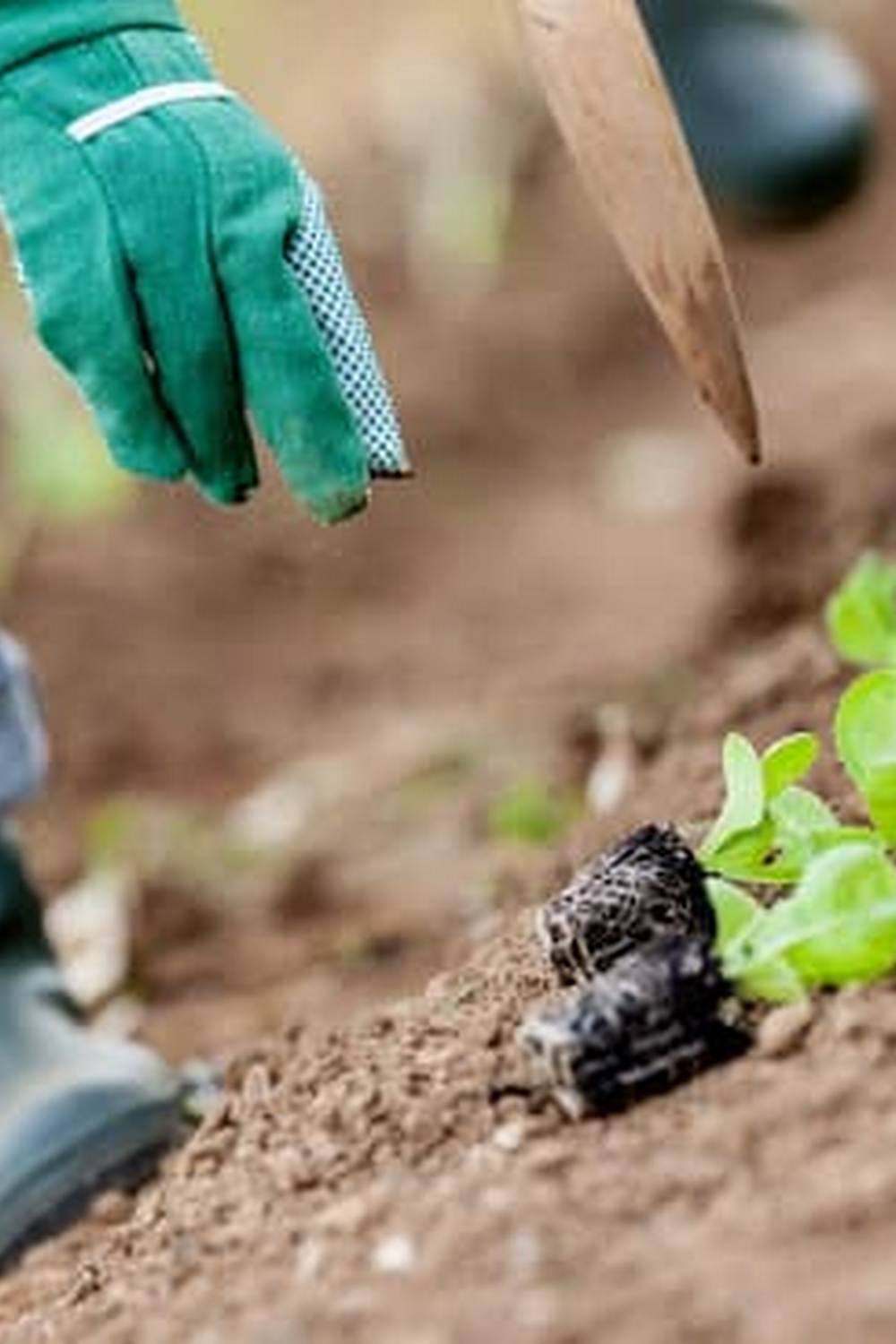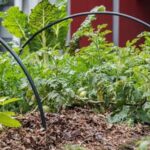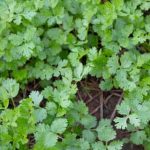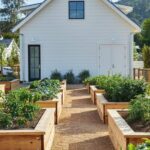Are you interested in getting started with easy gardening vegetables for beginners? Whether you have a green thumb or are just starting to explore the world of gardening, growing your own vegetables can be a rewarding and enjoyable experience. In this article, we will explore the benefits of starting a vegetable garden, provide tips on choosing the right location and soil for your garden, and highlight easy-to-grow vegetables that are perfect for beginners.
Starting a vegetable garden comes with numerous benefits, both for your health and for the environment. Not only does it provide you with fresh, nutritious produce, but it also allows you to reduce your carbon footprint by cutting down on the transportation emissions associated with store-bought produce. Additionally, gardening can be a great source of physical activity and stress relief, making it an ideal hobby for those looking to improve their overall well-being.
When it comes to selecting the right location and soil for your vegetable garden, there are several factors to consider in order to ensure success. From determining sunlight and water needs to understanding the composition of the soil in your chosen area, these considerations play a crucial role in creating a thriving garden. Fret not – we’ve got all the information you need to make informed decisions and get started on the right foot.
Choosing the Right Location and Soil for Your Garden
When it comes to starting a vegetable garden, one of the most important aspects to consider is choosing the right location and soil for your plants. The location of your garden should ideally receive at least 6-8 hours of sunlight per day, as most vegetables thrive in full sun. Additionally, you’ll want to ensure that your chosen location has good air circulation and is protected from strong winds.
In terms of soil, it’s important to have well-draining soil that is rich in organic matter. This will provide essential nutrients for your vegetable plants to grow healthy and strong. Consider conducting a soil test to determine the pH level and nutrient content of your soil, which will help you make any necessary amendments before planting.
When it comes to easy gardening vegetables for beginners, consider starting with low-maintenance options such as tomatoes, lettuce, carrots, and peppers. These vegetables are relatively resilient and can tolerate a variety of soil types and growing conditions. For example, tomatoes are known for being forgiving plants that can thrive in a wide range of soils, while lettuce is a cool-season crop that doesn’t require much maintenance.
By choosing the right location with adequate sunlight and preparing the soil with proper nutrients, beginners can set themselves up for success when growing their own easy gardening vegetables. With a little bit of research and planning, even those new to gardening can enjoy the satisfaction of harvesting their own fresh produce at home.
Easy-to-Grow Vegetables for Beginners
Tomatoes
Tomatoes are a popular choice for beginner gardeners because they are relatively easy to grow and can be grown in containers or directly in the ground. They do require a good amount of sunlight and regular watering, but with the right care, you can enjoy a bountiful harvest of juicy, flavorful tomatoes.
There are many varieties to choose from, including cherry tomatoes, heirloom tomatoes, and beefsteak tomatoes, so you can experiment with different types to see which ones thrive best in your garden.
Radishes
Radishes are another great option for beginner gardeners because they are fast-growing and low-maintenance. They can be sown directly into the soil and will be ready to harvest in just a few weeks. Radishes prefer cooler weather and can even be grown in early spring or late fall. With their crisp, peppery flavor, radishes can add a delicious bite to salads and other dishes.
Zucchini
Zucchini is a versatile and easy-to-grow vegetable that is perfect for beginners. These plants produce an abundance of squashes that can be harvested at various sizes. Zucchinis thrive in warm weather and require regular watering to keep the soil consistently moist. With the right care, you can enjoy an endless supply of zucchinis for grilling, sautéing, baking, and more.
These easy gardening vegetables for beginners are just a few examples of the many options available to new gardeners. By experimenting with different vegetables and learning from experience, you can develop the skills needed to successfully grow your own bountiful harvest. With patience and dedication, you will soon be enjoying the satisfaction of bringing homegrown produce from your garden to your dinner table.
Understanding Sunlight and Watering Needs of Vegetables
Sunlight Requirements
Different vegetables have varying sunlight needs. Some, like tomatoes and peppers, thrive in full sun, requiring at least 6-8 hours of direct sunlight daily. On the other hand, leafy greens such as lettuce and spinach can tolerate partial shade. It’s essential to understand the sunlight requirements of the vegetables you plan to grow so that you can choose the right spot in your garden to plant them.
Watering Guidelines
Proper watering is crucial for the success of your vegetable garden. Overwatering can lead to root rot and other issues, while underwatering can cause stress and poor growth. As a general rule, most vegetables require about 1 inch of water per week, either from rain or supplemental watering. However, some plants may have specific watering needs – for example, cucumbers and squash need more water during fruit development.
Monitoring Soil Moisture
To ensure that your vegetables are getting the right amount of water, it’s important to monitor the moisture level in the soil. You can do this by inserting your finger into the soil up to the first knuckle – if it feels dry at that depth, it’s time to water.
Alternatively, you can use a moisture meter to accurately gauge the soil moisture level and determine whether watering is necessary. By understanding and meeting the sunlight and watering needs of your vegetables, you’ll be well on your way to a successful harvest of easy gardening vegetables for beginners.
Essential Tools and Supplies for Vegetable Gardening
When starting a vegetable garden, it’s important to have the essential tools and supplies to ensure your plants grow strong and healthy. These tools can make gardening much easier for beginners and help you maintain your garden with ease. Some of the necessary tools you will need include a hand trowel for planting and transplanting, a garden fork or shovel for turning soil, and a watering can or hose for keeping your plants hydrated.
Additionally, having a pair of gardening gloves will protect your hands from dirt, thorns, and any potential irritants in the soil. It’s also important to have a pair of pruning shears for trimming and harvesting vegetables as they ripen. Along with these tools, consider investing in some basic supplies such as plant markers for labeling your crops, organic fertilizer or compost for nourishing the soil, and support structures like stakes or trellises for plants that need extra stability.
As a beginner gardener, having the right tools and supplies makes it easier to tend to your vegetable garden and ensures that your plants have everything they need to thrive. By having these essentials on hand, you can approach gardening with confidence and set yourself up for success in growing easy gardening vegetables for beginners.
Tips for Planting and Caring for Your Vegetables
When it comes to planting and caring for your vegetables, there are a few important tips to keep in mind to ensure a successful harvest. Here are some helpful guidelines to follow:
- Start by preparing the soil: Before planting your vegetables, make sure the soil is well-drained and rich in organic matter. This will provide the necessary nutrients for your plants to thrive.
- Plant at the right time: Different vegetables have different planting times, so be sure to research the ideal planting window for each crop in your area. This will give them the best chance of flourishing.
- Give them space to grow: Proper spacing between plants is crucial for allowing them to develop fully. Be sure to follow spacing recommendations on seed packets or plant tags.
Caring for your vegetables also involves proper watering, fertilizing, and pest control:
- Watering: Most vegetables require consistent moisture, so water them regularly, especially during dry periods. It’s best to water early in the morning or late in the evening to prevent evaporation.
- Fertilizing: While rich soil provides essential nutrients, you may need to supplement with fertilizer throughout the growing season. Choose a fertilizer specifically formulated for vegetables and follow the instructions carefully.
- Pest control: Keep an eye out for common pests like aphids, caterpillars, and beetles that can damage your crops. Consider using natural remedies or organic pesticides to protect your plants without harmful chemicals.
By following these tips for planting and caring for your vegetables, even beginner gardeners can enjoy a successful and bountiful harvest of home-grown produce. Remember that gardening is a learning process, so don’t be discouraged by any setbacks – simply learn from them and continue growing.
Dealing With Common Pests and Diseases in Vegetable Gardens
One of the biggest challenges for beginner gardeners is dealing with pests and diseases that can wreak havoc on their vegetable plants. However, with the right knowledge and strategies, it is possible to mitigate these issues and protect your precious plants. Here are some tips for dealing with common pests and diseases in your vegetable garden:
1. Identify the problem: The first step in addressing any pest or disease issue in your vegetable garden is to accurately identify the problem. Look for signs of damage such as holes in leaves, discoloration, or wilting. Additionally, inspect your plants regularly for any unusual growth patterns or symptoms of disease.
2. Implement natural pest control methods: Instead of reaching for harsh chemicals, consider using natural pest control methods to manage common garden pests like aphids, caterpillars, and snails. For example, introducing beneficial insects like ladybugs or lacewings can help keep pest populations in check. You can also use physical barriers such as row covers to protect your plants from insect damage.
3. Practice good garden hygiene: Many plant diseases thrive in damp or crowded conditions, so it’s important to practice good garden hygiene to prevent their spread. This includes properly spacing out your plants to improve air circulation, removing any diseased plant material promptly, and avoiding overhead watering which can promote fungal growth.
By taking proactive measures to prevent and address common pests and diseases in your vegetable garden, you can ensure a bountiful harvest of easy gardening vegetables for beginners without the frustration of dealing with widespread damage or crop loss due to these threats.
Harvesting and Enjoying the Fruits of Your Labor
In conclusion, starting a vegetable garden can bring numerous benefits, from providing fresh and nutritious produce to promoting relaxation and physical activity. By choosing the right location and soil, understanding sunlight and watering needs, and using essential tools and supplies, beginners can set themselves up for success in their gardening endeavors.
When it comes to easy gardening vegetables for beginners, there are several options to consider. Vegetables like tomatoes, cucumbers, and lettuce are simple to grow and offer a bountiful harvest with relatively little effort. Other beginner-friendly options include carrots, radishes, and green beans. These vegetables require minimal maintenance and are perfect for those new to gardening.
As you progress in your vegetable gardening journey, it’s important to be prepared for common pests and diseases that may affect your plants. By learning how to identify and manage these issues early on, you can protect your garden and ensure a successful harvest. With proper care and attention, you’ll soon be enjoying the fruits of your labor as you harvest fresh vegetables from your very own garden.
Frequently Asked Questions
What Is the Easiest Vegetable to Grow for Beginners?
The easiest vegetable to grow for beginners is lettuce. It requires minimal care, grows quickly, and can even be grown in containers. Lettuce also tolerates a wide range of growing conditions, making it perfect for novice gardeners.
What Vegetables Are Good for First-Time Gardeners?
For first-time gardeners, vegetables like tomatoes, zucchini, and radishes are good choices. Tomatoes are relatively easy to grow, while zucchini plants produce an abundant harvest. Radishes are quick to mature, giving beginners a sense of accomplishment.
What Should I Put in My Beginner Vegetable Garden?
In your beginner vegetable garden, it’s best to start with easy-to-grow plants like lettuce, tomatoes, peppers, and herbs like basil or parsley. These vegetables are low-maintenance and offer a good chance of success for novice gardeners. It’s important to consider the sunlight and soil requirements of each plant before starting your garden.

If you’re looking to get into vegetable gardening, or are just looking for some tips on how to make your current garden better, then you’ve come to the right place! My name is Ethel and I have been gardening for years. In this blog, I’m going to share with you some of my best tips on how to create a successful vegetable garden.





